Bigodi Wetlands Sanctuary is a community development effort at the edges of Kibale National Park to help protect the former Magombe Swamp. The sanctuary is found off the road between the districts of Kamwenge and Fort Portal in Uganda. The wetland was at first generally known as Magombe swamp (graveyard in local language) because of the number of people who once died there while constructing a bridge. In the 1990’s the wetland became known as Bigodi Wetlands Sanctuary.
Bigodi Swamp is four square kilometers large and is considered to be one of the prime birding destinations in Uganda. “Bigodi” was borrowed from a Rutooro word ‘kugodya’. Kugodya means to walk 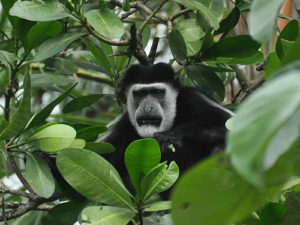 in a tired way. The term was coined because whenever people were going to Kibale forest, they had to pass through Bigodi wetland. Walking past the swamp was very tiring that they often had to sit down and rest before proceeding to the jungle.
in a tired way. The term was coined because whenever people were going to Kibale forest, they had to pass through Bigodi wetland. Walking past the swamp was very tiring that they often had to sit down and rest before proceeding to the jungle.
Bigodi wetland is an area with great biodiversity. It is home to about 200 species of birds including the crested crane and elusive Great Blue Turaco. The dominant plant is Egyptian Papyrus but the swamp is a favorite feeding ground for 8 species of primates including baboons, blue monkeys, grey cheeked mangabeys, L’Hoest monkeys, red colobus monkey, red tailed monkeys, chimpanzees, vervet monkeys, black and white colobus monkeys. Other animals found in the wetland include mongooses, wild pigs, antelopes and otters can be seen around the swamp.
Administration of Bigodi Wetlands Sanctuary
The Bigodi Wetlands Sanctuary is under the administration of the Kibale Association for Rural and Environmental Development (KAFRED). This community based organization was established in 1992 to enhance local capacities of the local communities for self-reliance (by reducing poverty) while protecting the environment. Since its foundation with only four people, membership to the project has risen to over 200. Full members are required to pay a fee while those living close to the swamp are registered as non-voting members automatically. A committee of 9 members help run the organization for a period of two years before new ones are elected at one of the annual meetings. Gender inclusion is paramount and considered when voting for members.
The founders of the project have sought to organize the poor local communities around the Bigodi swamp to benefit from tourism. KAFRED has used the money generated from Eco-tourism to improve quality and access to education to the local community by building schools and libraries. The project also 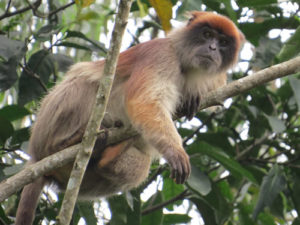 pays fees for students and contributes to teacher salaries. This is a great achievement because before the project started, there were no secondary schools in the area. The project has built houses for medical personnel in the health centers and taught local women how to be self-sufficient by teaching them how to make handcrafts or joining savings/credit institutions. KAFRED also provides family loan schemes, builds water holes, supplies fuel-efficient stoves and employs many of the local people. Some members of the community are tapping into tourism money by turning their local huts into perfect homesteads for international visitors interested in experiencing life in an African village.
pays fees for students and contributes to teacher salaries. This is a great achievement because before the project started, there were no secondary schools in the area. The project has built houses for medical personnel in the health centers and taught local women how to be self-sufficient by teaching them how to make handcrafts or joining savings/credit institutions. KAFRED also provides family loan schemes, builds water holes, supplies fuel-efficient stoves and employs many of the local people. Some members of the community are tapping into tourism money by turning their local huts into perfect homesteads for international visitors interested in experiencing life in an African village.
The success of KAFRED has set a high bar for similar community based initiatives close to national parks in Uganda but not without challenges. There are still occasional conflicts between some members of the community and animals/birds that raid their garden. Though poaching has reduced, there are still cases of animals (like Sitatunga) bring killed for meat. Perhaps the most serious challenge to the project is population explosion. The population around the wetland increases annually and there is always going to be pressure on the swamp. The project has tackled some of the issues by encouraging diversification through engaging in other enterprises other than relying on proceeds from tourism alone. Poaching has been reduced considerably by employing former poachers as Tour Guides. The work of KAFRED and its relentless effort to improve the condition of life for the people has helped it win several local and international awards.
Activities in Bigodi Wetlands Sanctuary
A tour of the Bigodi wetland is a must while visiting Kibale National Park. In fact, spotting primates and birds is more interesting and successful in the Bigodi swamp than it is in Kibale forest itself. The dense forest hides most of the primates and birds while in Bigodi, it is possible to have a clearer view of all the creatures. By visiting the Bigodi swamp, you support the local people directly while also helping them realize the benefits of preserving the Eco-system for posterity.
Visiting Bigodi Swamp is usually arranged in the afternoon after chimpanzee trekking in Kibale forest. All activities start at the Bigodi Wetlands Visitor’s Center. The exercise can take three hours walking for 4 to 5 kilometers through swamp boardwalks, villages and forest pathways. It’s perfect for complimentary experience which allows visitors to admire the parks biodiversity. Some of the activities organized at the Bigodi Swamp are bird watching, nature walks, community walks, butterfly viewing and wildlife/primates tracking.
Nature Walks: This is led by trained local Guides who are very knowledgeable of the local terrain. They are able to identify all the animal, bird and plant species and explain details about their matting 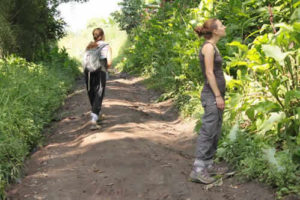 and breeding habits. Expect to encounter rich vegetation, wild plants and flowers. The Guides will share information about the role of the community in preserving the Eco-system and how their effort is contributing to the well-being of the people economically. You can ask to view the forest and vast wetland from a tall tree house. There is a well-established network of boardwalks through the vast wetlands to allow tourists visit the best spots. Nature walks are best done in the morning and afternoon lasting almost three hours. Nature walks cost $30 for international visitors and take 3 hours for each session. The morning session starts at 7:30 while the afternoon session starts at 3.00pm.
and breeding habits. Expect to encounter rich vegetation, wild plants and flowers. The Guides will share information about the role of the community in preserving the Eco-system and how their effort is contributing to the well-being of the people economically. You can ask to view the forest and vast wetland from a tall tree house. There is a well-established network of boardwalks through the vast wetlands to allow tourists visit the best spots. Nature walks are best done in the morning and afternoon lasting almost three hours. Nature walks cost $30 for international visitors and take 3 hours for each session. The morning session starts at 7:30 while the afternoon session starts at 3.00pm.
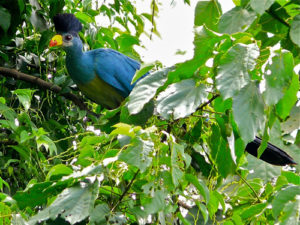 Birdwatching: Birding in Bigodi wetland will leave even the most seasoned birder impressed. The sheer variety and density of birds is difficult to describe. Most of the birds find the swamp a perfect sanctuary and breeding ground (fewer predators). The Bigodi Wetlands sanctuary is also a great feeding ground because it attracts insects and frogs which are favored by the birds. The main species found in the sanctuary include the Abyssinian groundthrush, African pitta, Black bee-eater, Black-capped apalis, Black-eared groundthrush, Blue-breasted kingfisher, Brown-chested alethe, Collared apalis, Crowned eagle, Dusky crimsonwing, Green-breasted pitta, Little greenbul, Purple-breasted sunbird, Yellow spotted nicator and the Yellow-rumped tinker bird.
Birdwatching: Birding in Bigodi wetland will leave even the most seasoned birder impressed. The sheer variety and density of birds is difficult to describe. Most of the birds find the swamp a perfect sanctuary and breeding ground (fewer predators). The Bigodi Wetlands sanctuary is also a great feeding ground because it attracts insects and frogs which are favored by the birds. The main species found in the sanctuary include the Abyssinian groundthrush, African pitta, Black bee-eater, Black-capped apalis, Black-eared groundthrush, Blue-breasted kingfisher, Brown-chested alethe, Collared apalis, Crowned eagle, Dusky crimsonwing, Green-breasted pitta, Little greenbul, Purple-breasted sunbird, Yellow spotted nicator and the Yellow-rumped tinker bird.
Cultural and Village Walks: Bigodi village is relatively small but with all the characteristic of typical Ugandan rural setting – mud/brick houses, surrounding gardens, playing children, women and women 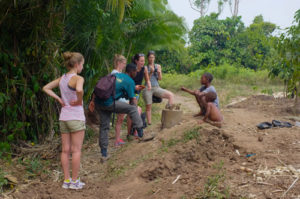 tending to the garden or domestic animals. While visiting the villages, visitors have an opportunity to experience the local food, learn how coffee is grown and visit the local schools. You can also go and see how the Bigodi Wetlands project has impacted on the villagers by employing the local folk, helping lower school fees, building medical centers and supplying water to the community. Alternatively, one can visit the Bigodi Women’s Group. This group is comprised of over 40 individuals. They make beautiful African crafts including beads from recycled paper or materials got from the swamp. Products from the Bigodi Women’s group are exported internationally bringing back good returns to the women.
tending to the garden or domestic animals. While visiting the villages, visitors have an opportunity to experience the local food, learn how coffee is grown and visit the local schools. You can also go and see how the Bigodi Wetlands project has impacted on the villagers by employing the local folk, helping lower school fees, building medical centers and supplying water to the community. Alternatively, one can visit the Bigodi Women’s Group. This group is comprised of over 40 individuals. They make beautiful African crafts including beads from recycled paper or materials got from the swamp. Products from the Bigodi Women’s group are exported internationally bringing back good returns to the women.
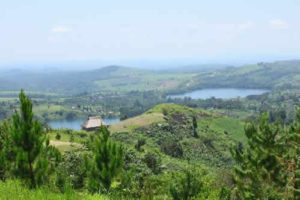 After monitoring project activities, your Guide can take you to visit the local businesses or go to the points where local beer is made using bananas. The more adventurous and curious minds can visit the village medicine man. In the olden times, the medicine men were responsible for treating all kinds of ailments using local herbs or by invoking the spirits of the ancestors. These medicine men/witch-doctors still receive a lot of people in their shrines despite the growth of Christianity and Islam in Uganda. Although many are embarrassed about being associated with these medicine and shrines, they visit quietly with the hope of solving their life’s problems. If you are not interested in the medicine man, you could visit the elderly people in the area to learn about the village history, the clans, ancient birth/ marriage ceremonies and so much more. You might be interested in our 3 Days Chimpanzee trekking in Kibale National Park.
After monitoring project activities, your Guide can take you to visit the local businesses or go to the points where local beer is made using bananas. The more adventurous and curious minds can visit the village medicine man. In the olden times, the medicine men were responsible for treating all kinds of ailments using local herbs or by invoking the spirits of the ancestors. These medicine men/witch-doctors still receive a lot of people in their shrines despite the growth of Christianity and Islam in Uganda. Although many are embarrassed about being associated with these medicine and shrines, they visit quietly with the hope of solving their life’s problems. If you are not interested in the medicine man, you could visit the elderly people in the area to learn about the village history, the clans, ancient birth/ marriage ceremonies and so much more. You might be interested in our 3 Days Chimpanzee trekking in Kibale National Park.
Visit the new Snake Park: The Bigodi wetland is home to venomous and non-venomous snakes. Unfortunately, it is rare to see them unless you spend more time in the area. To allow tourist see all the different types of snakes found in the area, the project has come up with an interesting preposition – start a small snake park. This park will house all kinds of snakes and will be offered as a free package as long as one books for the nature or village walks. One can also choose to visit the snake park alone without going for any of the other activities.
Facts about Bigodi Swamp
- Bigodi Wetlands Sanctuary is arguably the best example of how a community can manage natural resources for the benefit of all.
- It takes about 6 hours of driving from Kampala to reach Bigodi Swamp through beautiful and remarkable scenery.
- Although the wetland is home to over 135 bird species, the great blue Turaco is a favorite for birders. It is possible to see this beautiful bird flying around the swamp and nearby forests.
- Before going out to spot the birds, ensure that you are assigned a knowledgeable and experienced guide.
- If you are wondering where to stay for the night during your tour of the Bigodi wetlands sanctuary and surrounding area, then you don’t need to worry much. You can use the same hotels and lodges used by visitors to Kibale National Park. The Luxury hotels include Ndali Lodge, Primates Lodge or kyaninga lodge. A good mid-range lodge is Crater Lodge while budget travelers can opt for Chimps nest.

